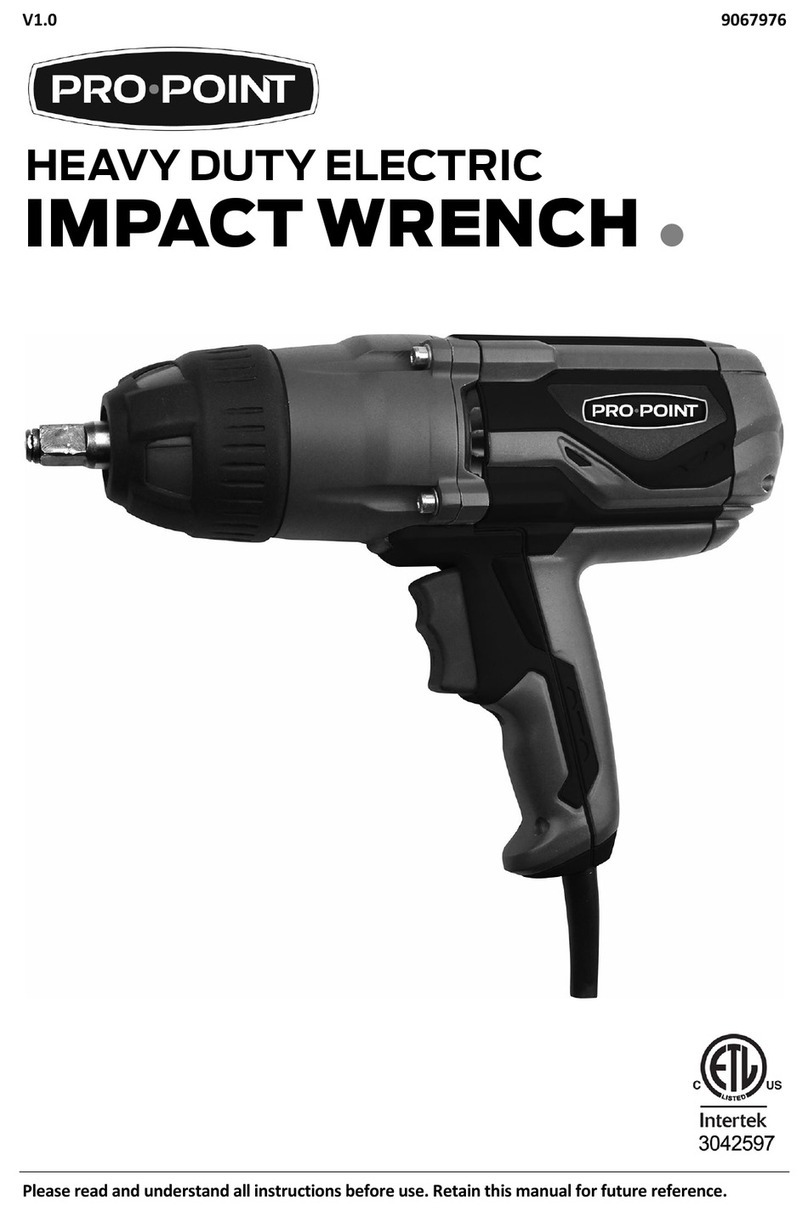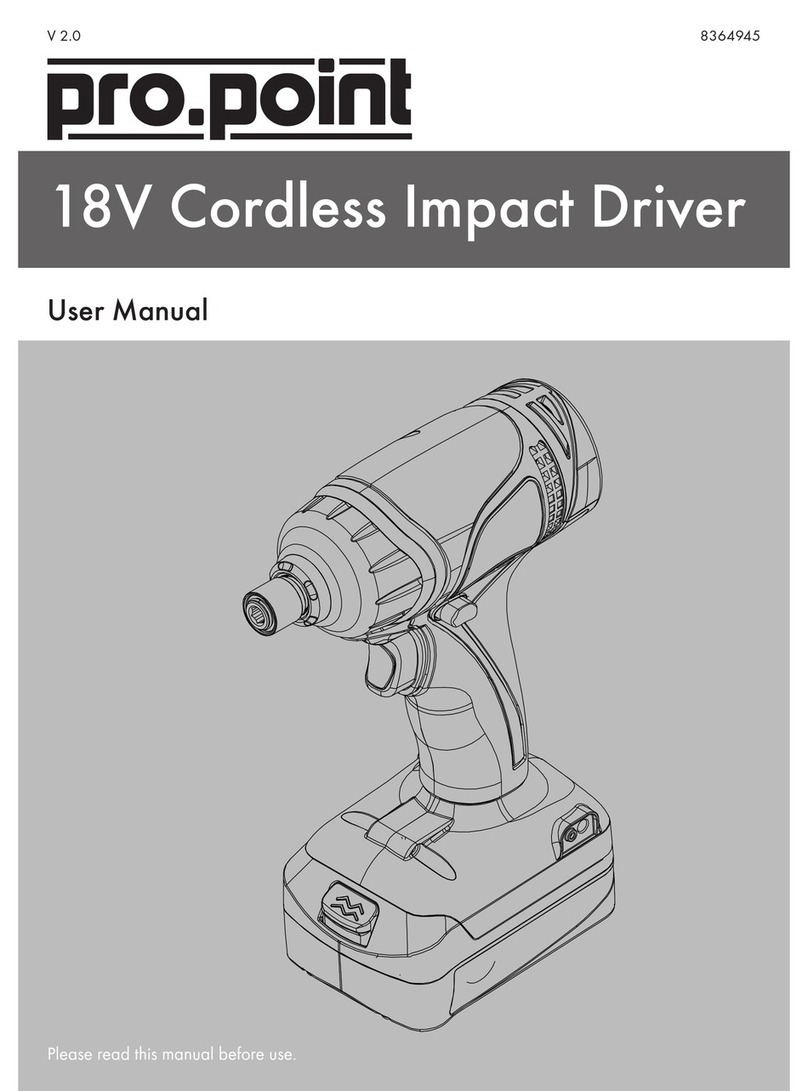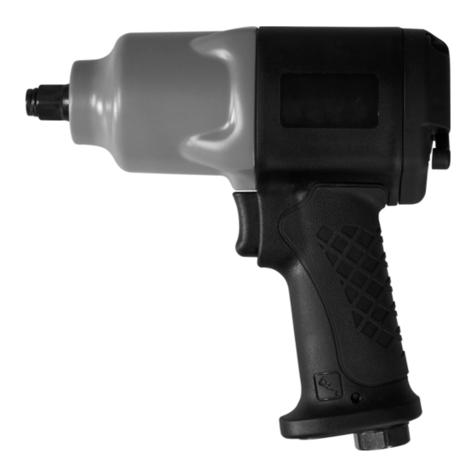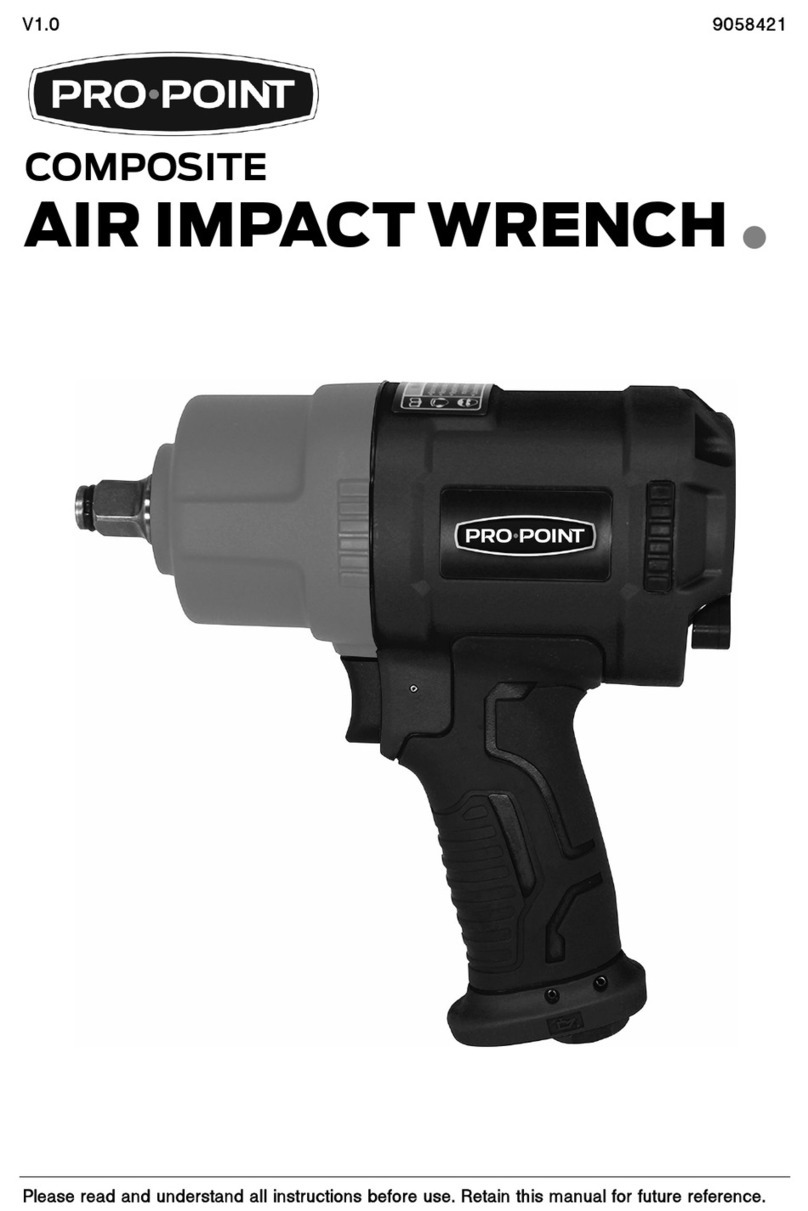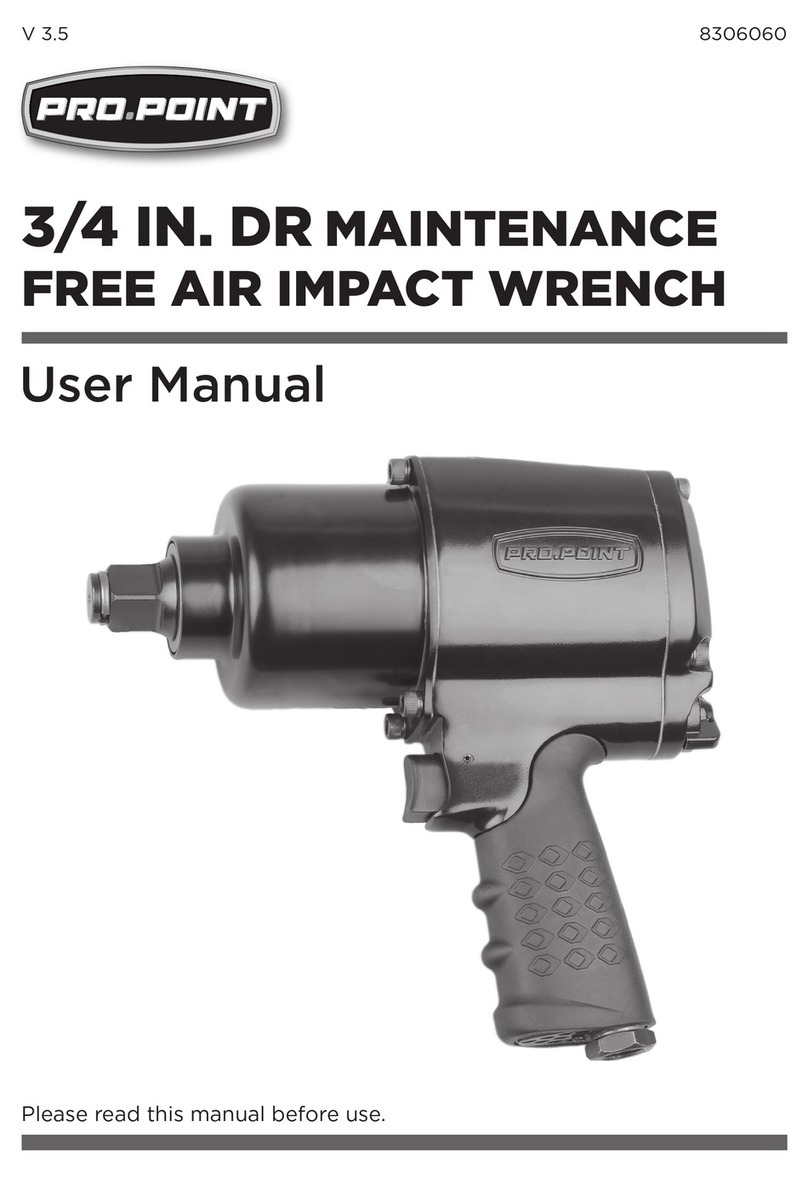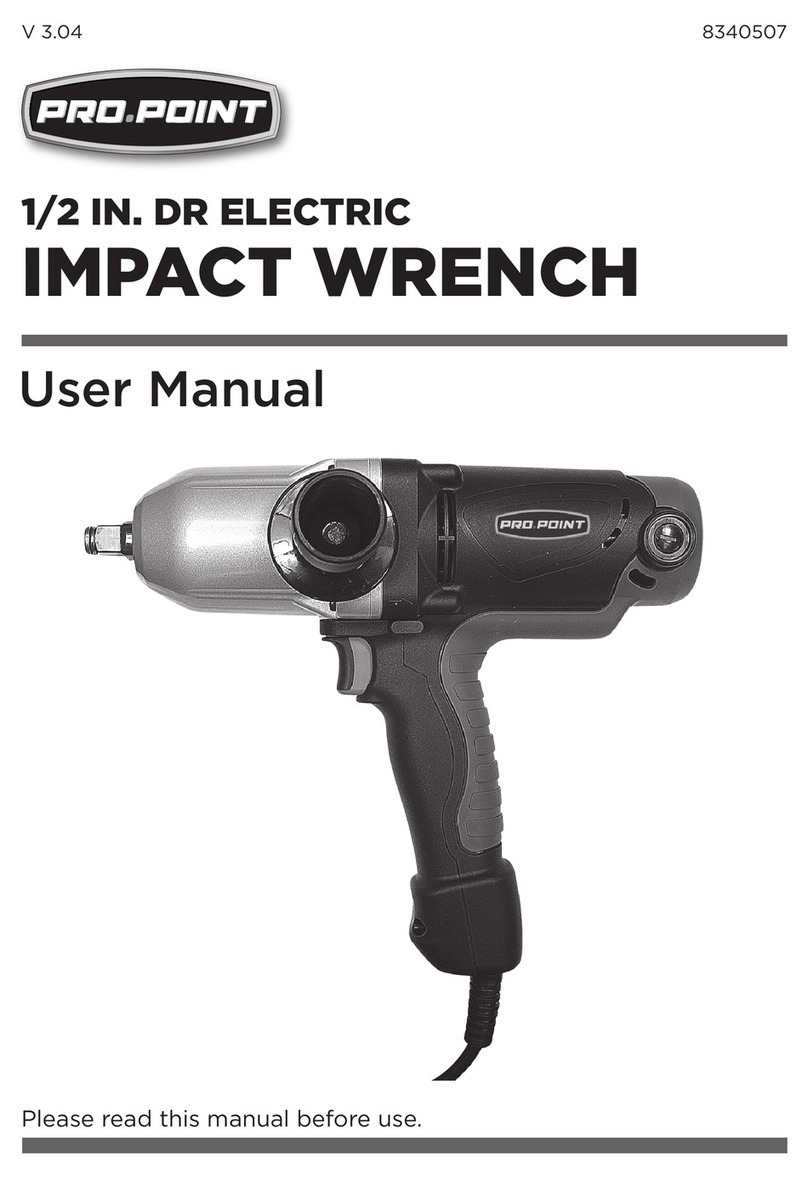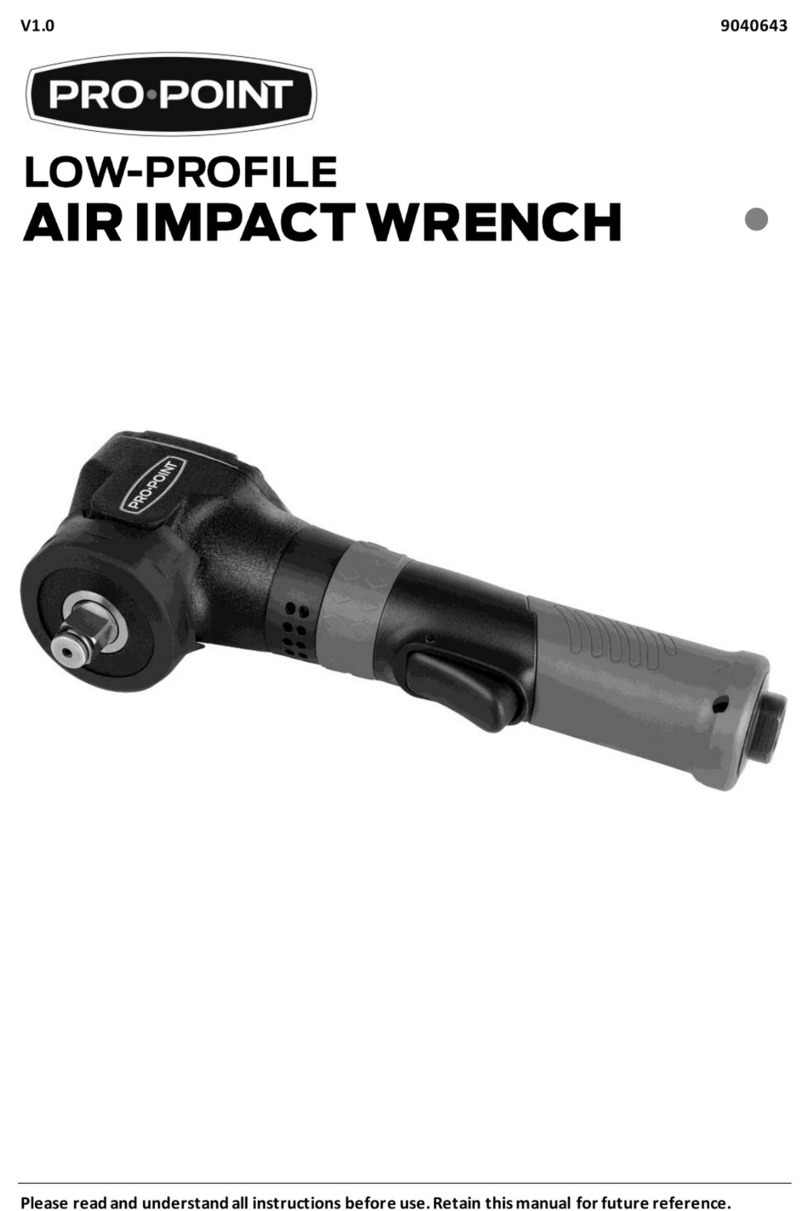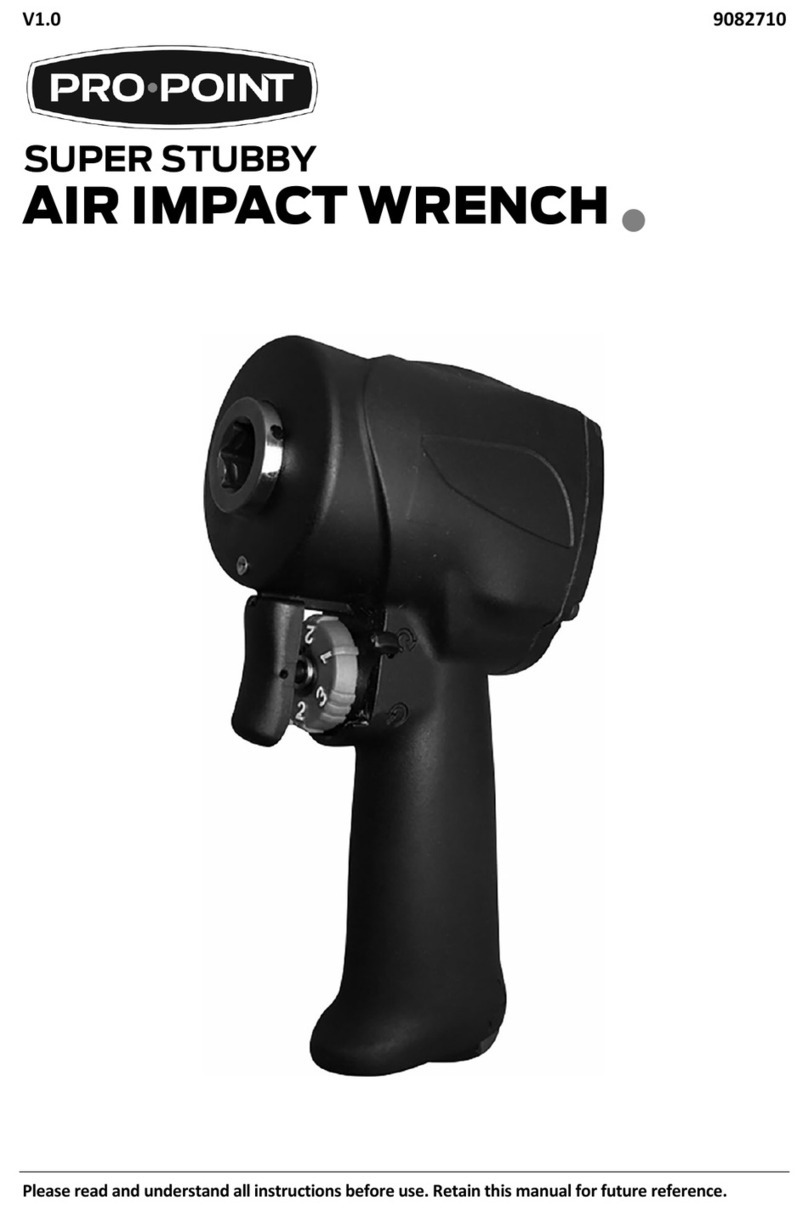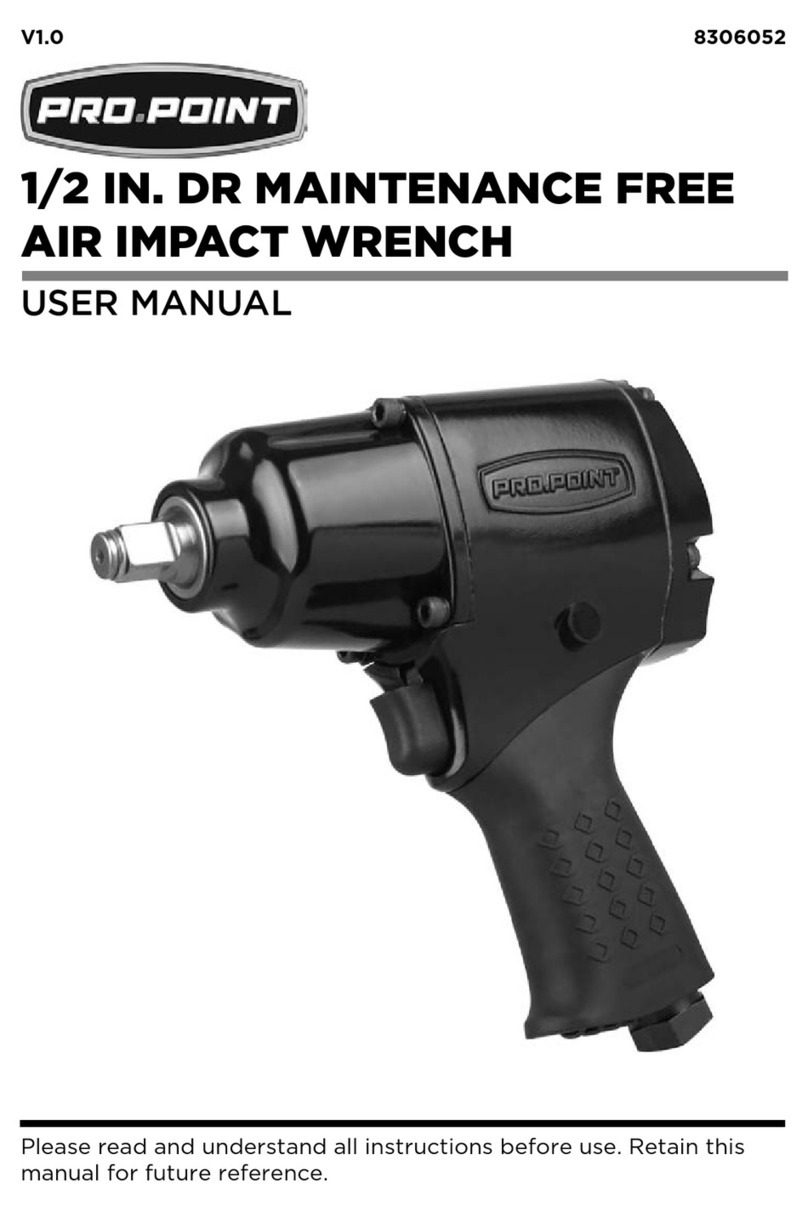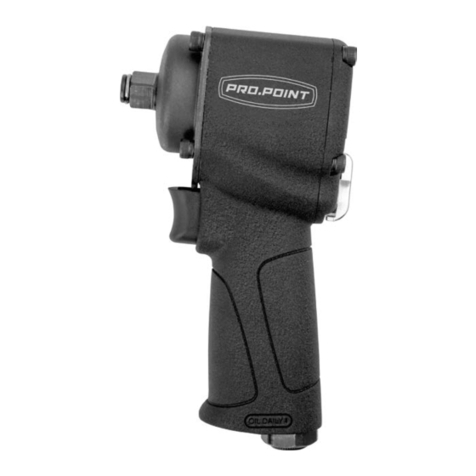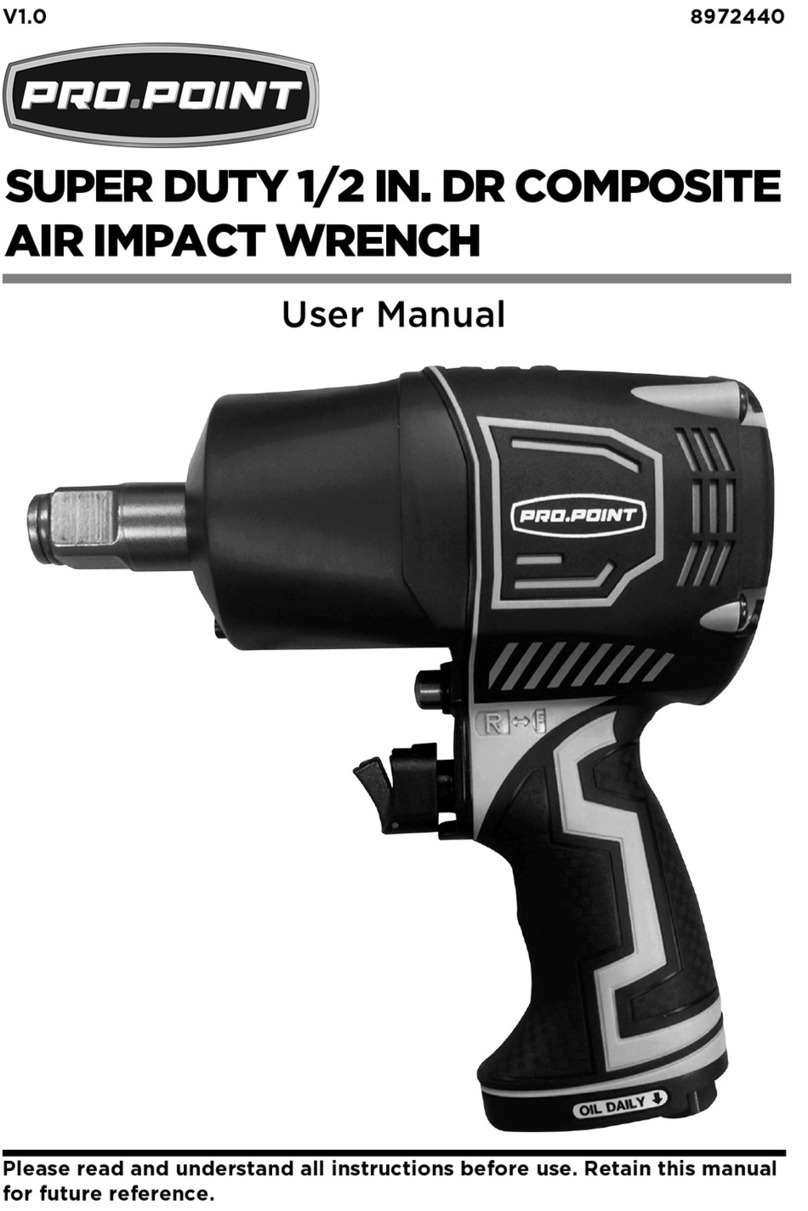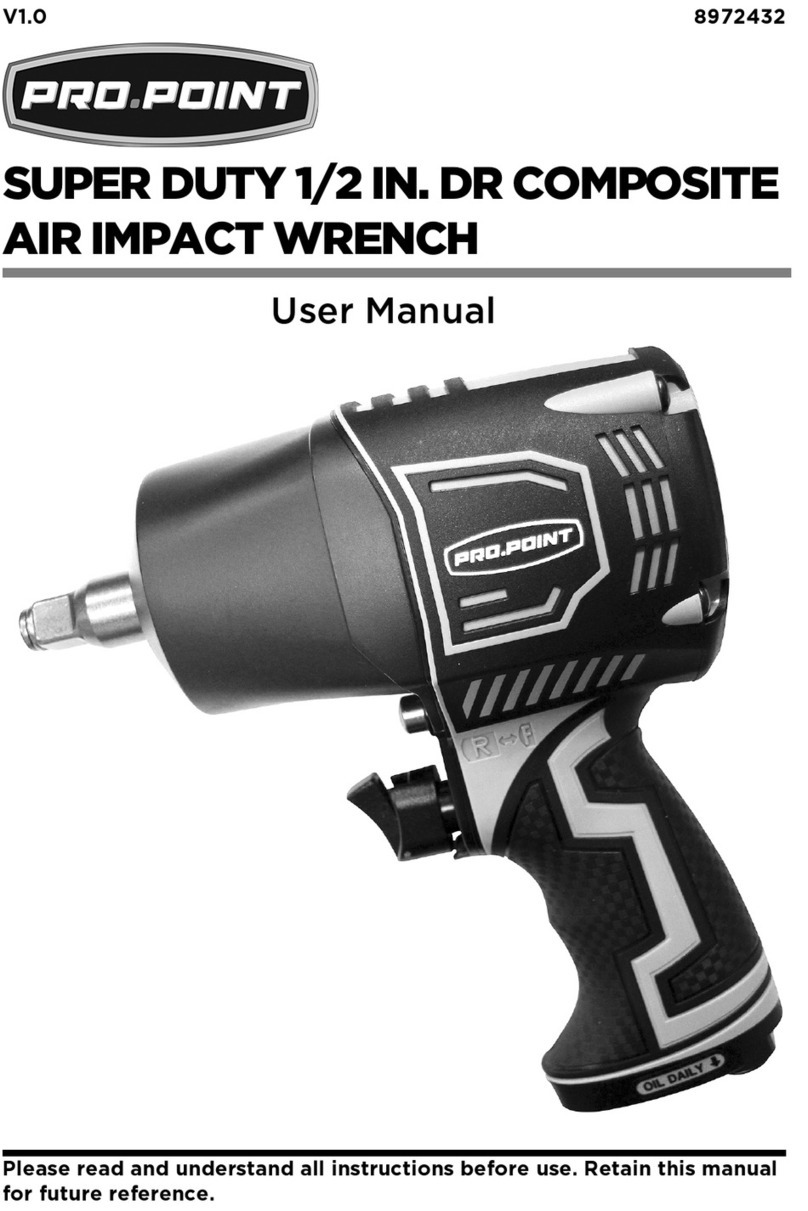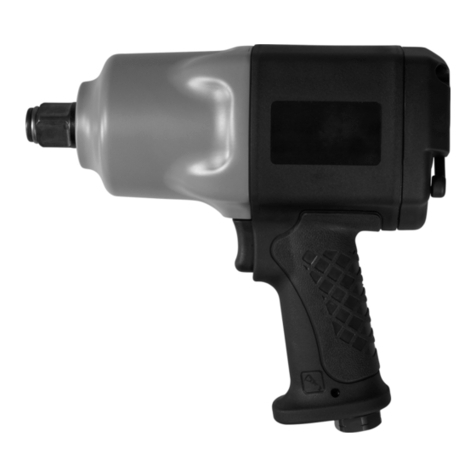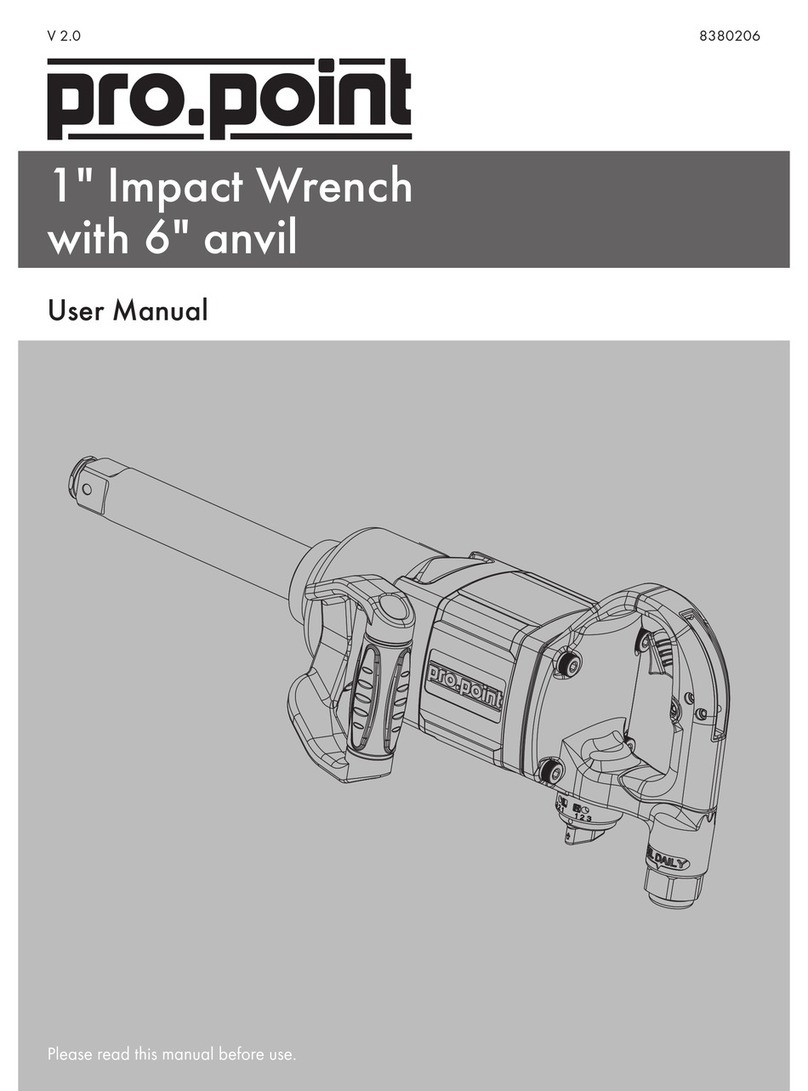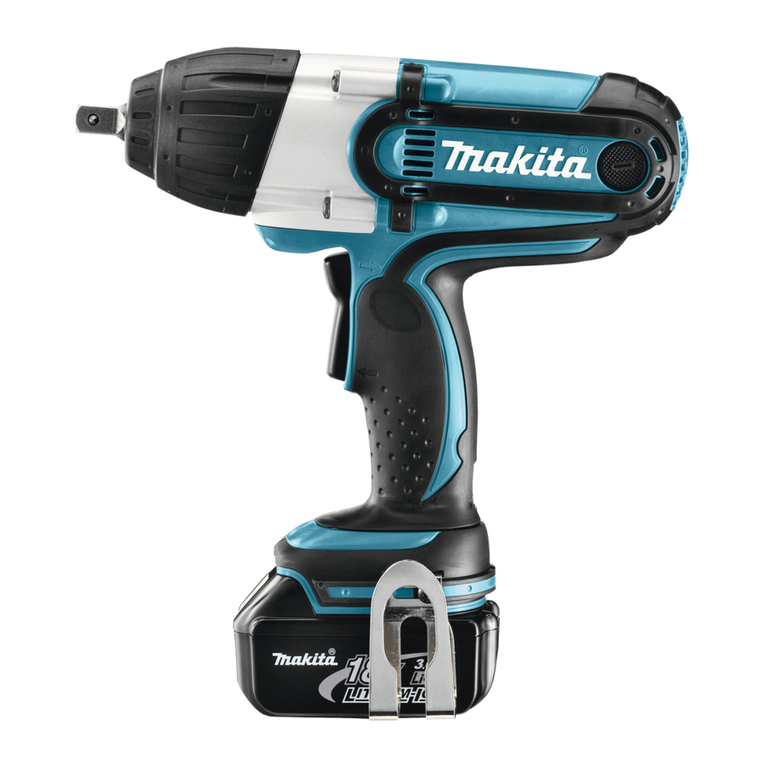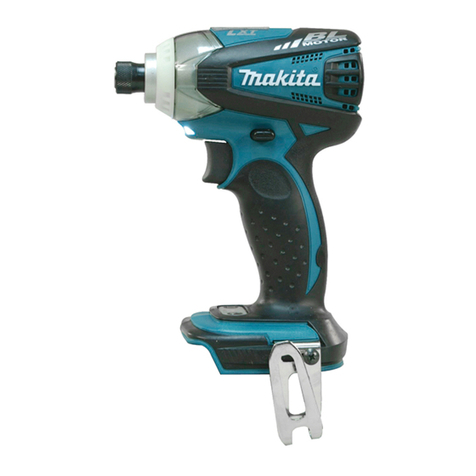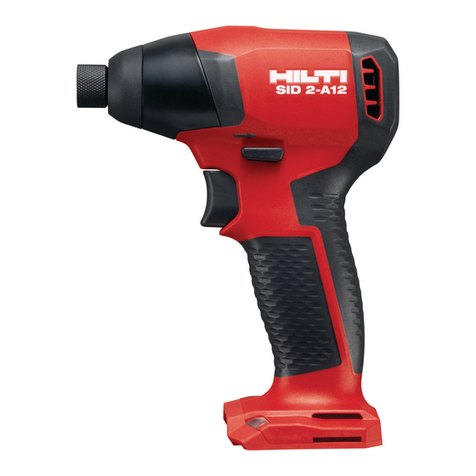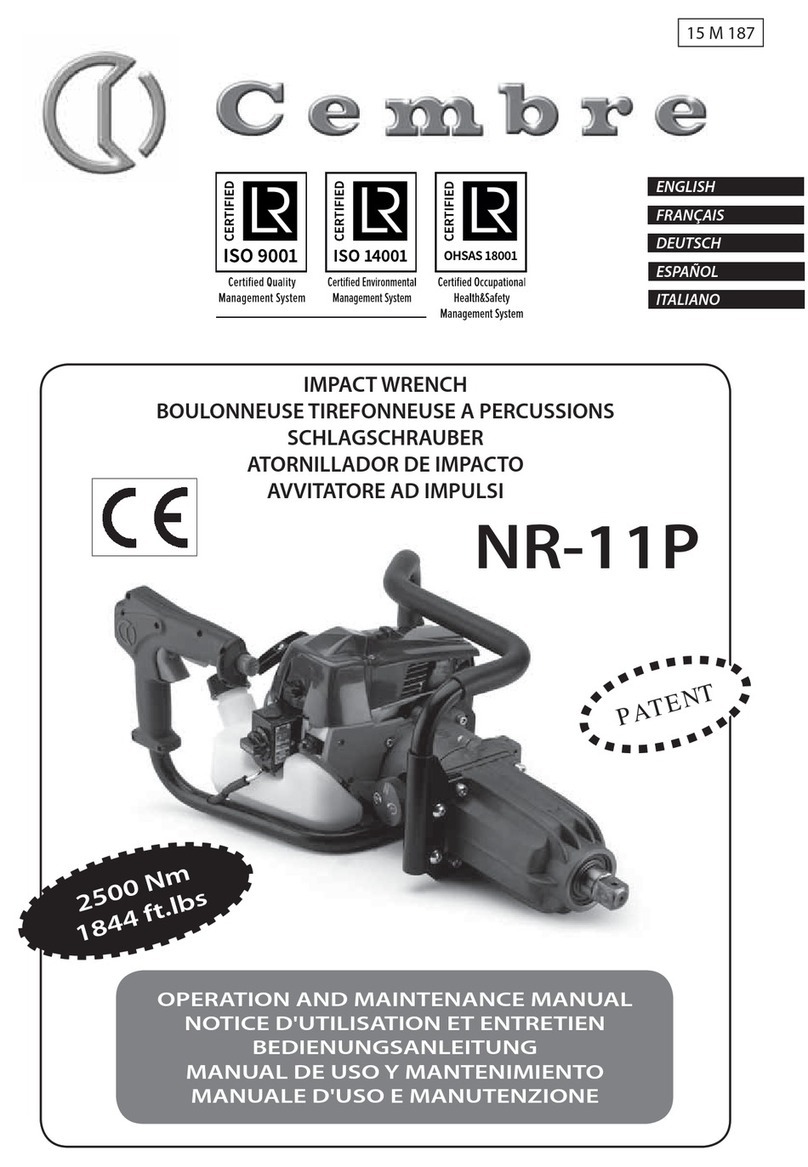PERSONAL SAFETY
CAUTION! Wear protective equipment approved by the Canadian
Standards Association (CSA) or American National Standards Institute
(ANSI) when using the air impact wrench.
1. Dress properly, wear protective equipment. Use breathing, ear, eye,
face, foot, hand and head protection. Always wear ANSI approved
impact safety goggles, which must provide both frontal and side
protection. Protect your hands with suitable gloves. Protect your
head from falling objects by wearing a hard hat. Wear an ANSI
approved dust mask or respirator when working around metal,
wood and chemical dusts and mists. Wear ANSI approved earplugs.
Protective, electrically non-conductive clothes and non-skid
footwear are recommended when working. Wear steel toed boots
to prevent injury from falling objects.
2. Control the tool, personal movement and the work environment to
avoid personal injury or damage to the tool. Stay alert, watch what
you are doing and use your common sense.
a. Keep articles of clothing, jewelry, hair, etc., away from moving
parts to avoid entanglement with a tool.
b. Do not operate any machine / tool when tired or under the
influence of drugs, alcohol or medications.
c. Do not overreach when operating a tool. Proper footing and
balance enables better control of a tool in
unexpected situations.
SPECIFIC SAFETY PRECAUTIONS
1. Do not over-tighten nuts. They could shatter and cause damage
to the tool or work piece or cause injury. Use a torque wrench to
torque the nut after using the impact wrench.
2. Do not use any additional force upon the wrench in order to
remove a nut.
3. Do not allow the wrench to run without load for an extended
period of time as this will shorten its life.
4. This tool will not stop moving immediately. Do not lay the tool
down or leave it unattended until it has come to a complete stop. A
part that is moving could make the tool jump or grab a surface and
pull the tool out of your control.
5. When operating the tool, use proper eye and hearing protection as
well as protective gloves.
